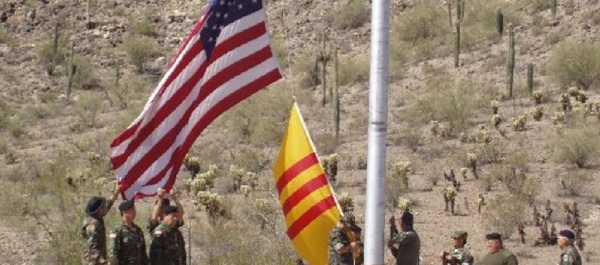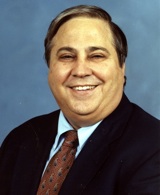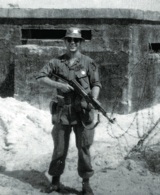
Retired Army Colonel Joseph Abodeely’s Website, Straight Talk with Joe, describes him as “a native Arizonan who has some strong opinions and ideas about his state, the nation, and the world.” Many of those opinions were forged in combat, both in the military and in the courtroom.
During Operation Pegasus, the April 1968 airmobile operation to relieve the besieged U.S. Marine firebase at Khe Sanh, South Vietnam, he led the first Air Cavalry platoon that reached the firebase, after seven days fighting its way through.
 Since that time he’s served in the Judge Advocate General’s Corps and written policy papers that provided guidelines for U.S. military police worldwide. As a civilian, he’s been a prosecuting attorney and a defense attorney. In addition to his Website, he had a radio talk show and a program on Phoenix Public Access Channel 98 for over 10 years.
Since that time he’s served in the Judge Advocate General’s Corps and written policy papers that provided guidelines for U.S. military police worldwide. As a civilian, he’s been a prosecuting attorney and a defense attorney. In addition to his Website, he had a radio talk show and a program on Phoenix Public Access Channel 98 for over 10 years.
Of Lebanese descent, he’s a past president of the Arab American Cultural Association in Phoenix. For many years, he’s served as president of the board for the Arizona Military Museum, an all-volunteer group dedicated to preserving the area’s military heritage from the days of the Spanish Conquistadores to the present-day wars in Iraq and Afghanistan. On August 19, 2010, the retired colonel spoke with HistoryNet in an exclusive interview.
HistoryNet: You led an Air Cavalry platoon that was the first relief unit to reach the besieged Khe Sanh firebase in 1968. As you entered the firebase, you blew “Charge” on an old bugle. Tell us a little about your role in Operation Pegasus, and why you decided to sound “Charge.” (Col. Abodeely’s personal account, Breaking the Siege at Khe Sanh, appeared in the October 2010 Vietnam magazine. Click the link to read the article online.)
Col. (ret) Joseph Abodeely: I was the leader of 2nd Platoon, D Company, 2nd Battalion, 7th Cavalry, 3rd Brigade, 1st Air Cav. Our job was to do infantry missions—patrols, ambushes, kill the enemy by fire and movement. We worked south of Hue while the battle was going on there (during the 1968 Tet Offensive). When we got word we were going to Khe Sanh I was worried because I’d been reading about what was going on there, and I thought it must be hell on earth.
We landed at LZ Stud, on a mountaintop. We could see a river below and Arc Lights in the distance. (Arc Light refers to bombing strikes by B-52 Stratofortresses.)
I was senior platoon leader in the company, so our platoon frequently got tasked with some of the more difficult missions, but that day we were the last platoon in the order of movement. When the lead elements encountered heavy resistance, however, the order of march was reversed and we were airlifted to become the lead platoon in clearing the road to the firebase at Khe Sanh.
 Earlier we had found what was probably a regimental-sized bunker complex, but the NVA (North Vietnamese Army) had cleared out. There were lot of craters from the B-52s’ bombs, and several bodies with blood coming from ears and noses (from the concussions). We found stockpiles of weapons and equipment and an AK-47 rifle and this old bugle the NVA had used, which I took with me.
Earlier we had found what was probably a regimental-sized bunker complex, but the NVA (North Vietnamese Army) had cleared out. There were lot of craters from the B-52s’ bombs, and several bodies with blood coming from ears and noses (from the concussions). We found stockpiles of weapons and equipment and an AK-47 rifle and this old bugle the NVA had used, which I took with me.
All the way in from that campsite to Khe Sanh was lined with bunkers. Now we were heading for the goal line—were they going to do a goal-line stance? But the last two miles we had no contact. When we reached the firebase, one of the Marines came out to shake our hands. We had been ordered not to go inside the wire yet, so we set up camp outside.
When we started into the firebase the next day, my company commander said, “Hey, 2–6 (2 = 2nd Platoon, 6 = leader), can you play ‘Charge’ on that?” I said, “Well, I played trumpet in high school. I can probably play it.” So I played “Charge” as we walked through the gate.
HN: You remained involved with the military until 1995. After earning a law degree from the University of Arizona in 1971, you were part of the Judge Advocate General’s Corps. Didn’t you write some policy papers for JAG?
JA: When I came back from Vietnam, I thought I was done, but I got a letter from my “uncle” (Uncle Sam), saying, Boy, you still owe me some time. So I joined the National Guard. I was in the military police in the Guard and became a reserve officer Judge Advocate of 11th Air Defense Artillery Brigade under the 82nd Airborne Corps, a rapid deployment force. Later in my Reserve career, I became Chief of the Law Branch of the Military Police Operations Agency at the Pentagon, a policy group for military police operations around world, under the G-3 (Operations) for the Army at the Pentagon.
I wrote a paper for the NCIC (National Crime Information Center) to make sure the Army had a policy for dealing with local police. During Desert Storm I was on active duty, and I did research and wrote an informational paper clarifying the role of the Army in prosecuting war crimes.
[continued on next page]




